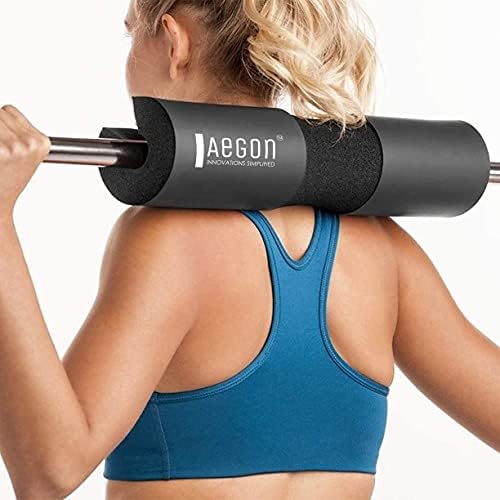Are you tired of spending hours at the gym without seeing significant muscle gains? 💪 You’re not alone. Many fitness enthusiasts struggle to find the most effective exercises for building muscle mass. But what if we told you that just five key exercises could transform your physique?
Imagine walking into the gym with a clear, focused plan that targets every major muscle group in your body. No more aimless wandering from machine to machine or wasting time on ineffective routines. It’s time to maximize your results with a streamlined approach to muscle building. In this blog post, we’ll reveal the top 5 exercises that fitness experts swear by for explosive muscle growth. From squats that sculpt your lower body to pull-ups that carve out a V-shaped back, these powerhouse moves will revolutionize your workout routine and fast-track your progress.
Get ready to discover the ultimate muscle-building blueprint as we dive into each exercise, explaining why it’s crucial for your gains and how to perform it correctly. Whether you’re a beginner looking to build a solid foundation or an experienced lifter aiming to break through a plateau, these exercises will be your secret weapon for achieving the muscular physique you’ve always dreamed of. Let’s explore the five game-changing exercises that will take your strength and muscle mass to new heights! 🏋️♂️🚀
Squats: The Ultimate Lower Body Builder
A. Proper squat technique
Thick Squat Foam Cushion

To perform a squat correctly:
- Stand with feet shoulder-width apart
- Keep your chest up and core engaged
- Lower your body as if sitting back into a chair
- Keep knees in line with toes
- Descend until thighs are parallel to the ground
- Push through your heels to return to starting position
Remember to maintain a neutral spine throughout the movement.
B. Muscle groups targeted
Squats primarily target:
| Muscle Group | Engagement Level |
|---|---|
| Quadriceps | High |
| Hamstrings | Moderate |
| Glutes | High |
| Calves | Low |
| Core | Moderate |
This compound exercise effectively works multiple muscle groups simultaneously.
C. Variations for different fitness levels
- Bodyweight squats: Ideal for beginners
- Goblet squats: Using a dumbbell or kettlebell
- Back squats: Barbell across upper back
- Front squats: Barbell across front deltoids
- Jump squats: Adding plyometric element for advanced athletes
D. Incorporating squats into your routine
Include squats in your workout:
- 2-3 times per week
- 3-5 sets of 8-12 repetitions
- Allow 48 hours between sessions for muscle recovery
Progressively increase weight and adjust repetitions as you build strength. Squats are versatile and can be integrated into various workout styles, from strength training to HIIT sessions. Now that we’ve covered the foundational lower body exercise, let’s move on to another powerful compound movement.
Deadlifts: Strengthening Your Entire Posterior Chain
Dead Lift Strap

A. Correct form and execution
Proper deadlift form is crucial for maximizing benefits and preventing injuries. Follow these steps:
- Stand with feet hip-width apart, toes under the barbell
- Bend at the hips and knees, gripping the bar just outside your legs
- Keep your back straight, chest up, and shoulders back
- Engage your core and lift the bar by extending your hips and knees
- Keep the bar close to your body throughout the movement
- Stand fully upright at the top, squeezing your glutes
- Lower the bar by hinging at the hips and bending your knees
| Common Cues | Purpose |
|---|---|
| “Chest up” | Maintains proper spinal alignment |
| “Push the floor away” | Engages leg muscles effectively |
| “Squeeze oranges in armpits” | Keeps upper back tight |
B. Benefits for overall muscle development
Deadlifts offer numerous benefits for muscle growth:
- Targets multiple muscle groups: hamstrings, glutes, lower back, traps, and core
- Improves grip strength
- Enhances overall body strength and power
- Boosts testosterone and growth hormone production
- Increases bone density
- Improves posture and balance
C. Common mistakes to avoid
Be aware of these common deadlift errors:
- Rounding the back
- Jerking the weight off the floor
- Allowing the bar to drift away from the body
- Hyperextending at the top of the movement
- Neglecting proper breathing techniques
D. Progressive overload strategies
To continually build strength and muscle, implement these strategies:
- Gradually increase weight
- Add more repetitions or sets
- Decrease rest time between sets
- Incorporate variations (e.g., sumo deadlifts, Romanian deadlifts)
- Use resistance bands or chains for variable resistance
Now that we’ve covered deadlifts, let’s move on to another essential exercise for building upper body strength.
Bench Press: Sculpting a Powerful Upper Body
Mastering bench press fundamentals
The bench press is a cornerstone exercise for upper body strength. To perform it correctly:
- Lie on a flat bench with your feet firmly on the ground
- Grip the barbell slightly wider than shoulder-width
- Lower the bar to your chest, keeping your elbows at a 45-degree angle
- Push the bar back up to the starting position
Chest, shoulder, and tricep engagement
The bench press primarily targets:
| Muscle Group | Engagement Level |
|---|---|
| Chest | High |
| Shoulders | Medium |
| Triceps | Medium |
Safety considerations
To prevent injury:
- Always use a spotter when lifting heavy
- Keep your wrists straight and elbows tucked
- Maintain a stable core throughout the movement
- Avoid bouncing the bar off your chest
Bench press variations for muscle growth
Incorporate these variations to stimulate muscle growth:
- Incline bench press: Targets upper chest
- Decline bench press: Focuses on lower chest
- Close-grip bench press: Emphasizes triceps
- Dumbbell bench press: Improves stability and range of motion
By mastering the bench press and its variations, you’ll sculpt a powerful upper body while enhancing overall strength. Next, we’ll explore pull-ups, an excellent exercise for building a stronger back and arms.
Pull-Ups: Building a Stronger Back and Arms
A. Proper pull-up technique
Mastering the proper pull-up technique is crucial for maximizing muscle growth and preventing injuries. Here’s a step-by-step guide:
- Grip the bar with hands slightly wider than shoulder-width apart
- Hang with arms fully extended and engage your core
- Pull yourself up until your chin is over the bar
- Lower yourself back down with control
| Phase | Key Points |
|---|---|
| Starting | Engage core, retract shoulder blades |
| Pulling | Lead with chest, keep elbows close to body |
| Peak | Squeeze back muscles at the top |
| Lowering | Maintain control, resist gravity |
B. Muscle groups targeted
Pull-ups are a compound exercise that engages multiple muscle groups simultaneously:
- Latissimus dorsi (lats)
- Biceps
- Forearms
- Trapezius
- Rhomboids
- Core muscles
C. Modifications for beginners
For those new to pull-ups, try these modifications:
- Assisted pull-up machine
- Resistance band-assisted pull-ups
- Negative pull-ups (focusing on the lowering phase)
- Inverted rows using a lower bar or TRX straps
D. Advanced pull-up variations
Once you’ve mastered the basic pull-up, challenge yourself with these variations:
- Wide-grip pull-ups
- Close-grip pull-ups
- L-sit pull-ups
- Weighted pull-ups
- Muscle-ups
E. Incorporating pull-ups into your workout plan
To effectively integrate pull-ups into your routine:
- Start with 2-3 sets of 8-12 repetitions
- Perform pull-ups 2-3 times per week
- Alternate between pull-up variations for balanced development
- Gradually increase volume and difficulty as you progress
Remember to allow adequate rest between pull-up sessions to prevent overtraining and promote muscle recovery. As we move forward, let’s explore how lunges can complement your upper body strength gained from pull-ups by enhancing lower body power and balance.
Lunges: Enhancing Lower Body Strength and Balance
Correct lunge form
Performing lunges with proper form is crucial for maximizing benefits and preventing injuries. Follow these key steps:
- Start in a standing position with feet hip-width apart
- Step forward with one leg, lowering your hips until both knees are bent at about 90-degree angles
- Keep your front knee aligned with your ankle
- Maintain an upright torso and engage your core
- Push back to the starting position through your front heel
Benefits for leg and glute development
Lunges offer numerous advantages for lower body strength and aesthetics:
| Benefit | Description |
|---|---|
| Muscle activation | Engages quadriceps, hamstrings, glutes, and calves |
| Symmetry | Addresses muscle imbalances between legs |
| Functional strength | Improves stability and balance for daily activities |
| Versatility | Can be performed anywhere with minimal equipment |
Lunge variations for full lower body engagement
Incorporate these lunge variations to target different muscle groups:
- Reverse lunges: Step backward instead of forward
- Side lunges: Step to the side, emphasizing inner and outer thighs
- Walking lunges: Continuous forward movement for cardiovascular benefits
- Bulgarian split squats: Rear foot elevated for increased quad engagement
Combining lunges with other exercises for maximum results
To optimize lower body development, integrate lunges with complementary exercises:
- Superset lunges with squats for comprehensive leg workouts
- Pair lunges with plyometric exercises like box jumps for explosive power
- Alternate lunges with deadlifts to target both anterior and posterior chains
- Incorporate lunges into full-body circuits for enhanced fat burning and muscle building
By mastering lunge techniques and variations, you’ll significantly enhance lower body strength, balance, and overall athletic performance. Next, we’ll recap the top 5 exercises and provide guidance on creating a well-rounded muscle-building routine.
Building muscle doesn’t have to be complicated. By incorporating these five key exercises into your workout routine, you can target multiple muscle groups and achieve significant gains. Squats, deadlifts, bench presses, pull-ups, and lunges form a solid foundation for overall strength and muscle development.
Remember, consistency is key when it comes to muscle growth. Combine these exercises with proper nutrition and adequate rest to maximize your results. Whether you’re a beginner or an experienced lifter, these exercises can be tailored to your fitness level, helping you build the strong, muscular body you desire. Start implementing these powerhouse moves today and watch your physique transform.
